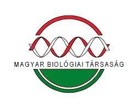Az Iris nyaradyana Prod. taxonómiai elkülönítése molekuláris markerekkel
Absztrakt
A Nyárády Erazmus Gyuláról elnevezett Nyárády-nőszirmot (Iris nyaradyana Prod.) Romániából, a Felső-Maros völgyének szikláiról írták le 1934-ben. A faj taxonómiai helyzete máig vitatott, morfológiája alapján egyes szerzők az I. aphylla, más szerzők pedig az I. × germanica fajjal azonosítják. Kutatásunk során elsőként vontuk be molekuláris vizsgálatba a Nyárády-nőszirmot, és célunk volt a faj rokonságának elemzése és értékelése molekuláris markerek alapján. Munkánk során a nukleáris ITS régiót és öt kloroplasztisz DNS markert (matk5–matk6, psbA5’R–matk8F, petL–psbE, psbM–trnD, trnL5’UAAF–trnFGAA) alkalmaztunk, melyek segítségével összesen 9 Iris faj mintáit hasonlítottunk össze és további két faj (Crocus sp., Gladiolus sp.) szekvenciáját külcsoportként használtunk fel. Az egyik kloroplasztisz marker, a matk5–matk6 nem volt variábilis ezeknél a fajoknál, amit ezért a további vizsgálatokból kihagytunk. A szekvenciák elemzésével megállapítottuk, hogy az Iris nyaradyana az I. × germanica, I. pallida, I. variegata és I. aphylla fajokkal áll legközelebbi rokonságban, de a molekuláris mintázat alapján egyértelműen egyik fajjal sem azonos. Egyes szerzők vélekedésével ellentétben a molekuláris összehasonlítás alapján a Nyárády-nőszirom nem az I. aphylla egyik populációja, attól több tulajdonságban is különbözik, annak ellenére, hogy az I. aphylla faj nagyfokú morfológiai variabilitásáról korábbi publikációk említést tesznek. A kloroplasztisz DNS szekvenciákból készült Templeton-Crandall-Sing (TCS) analízis a Nyárády-nőszirom haplotípusait az I. × germanica és I. variegata egyes haplotípusaival találta leginkább hasonlónak. A kloroplasztisz törzsfán a három I. nyaradyana egyed közösen alkotott egy nagy támogatottságú, önálló kládot.
Hivatkozások
'13/2001. (V. 9.) KöM rendelet a védett és a fokozottan védett növény- és állatfajokról, a fokozottan védett barlangok köréről, valamint az Európai Közösségben természetvédelmi szempontból jelentős növény- és állatfajok közzétételéről. https://net.jogtar.hu/jogszabaly?docid=A0100013.KOM (Hozzáférés: 2024. április 29.)
Bernátsky J. 1911: A hazai Iris-félék rendszere. Mathematikai és Természettudományi Értesítő 29: 537–552.
Bieberstein A. F. M. 1832: Centuria plantarum rariorum Rossiae meridionalis praesertim Tauriae et Caucasi, iconibus descriptionibusque illustrata 2. [kiadó nélkül], Petropoli, tab. 51
Borchsenius F. 2009: FastGap 1.2. Department of Biosciences, Aarhus University, Denmark. Published online at https://www.aubot.dk/FastGap_home.htm
Dykes W. R. 1924: A handbook of garden Irises. M. Hopkinson & Co, London, 250 pp.
Gouy M., Guindon S., Gascuel O. 2010: SeaView version 4: a multiplatform graphical user interface for sequence alignment and phylogenetic tree building. Molecular Biology and Evolution 27(2): 221–224. https://doi.org/10.1093/molbev/msp259
Guo J., Wilson C. A. 2013: Molecular Phylogeny of Crested Iris Based on Five Plastid Markers (Iridaceae). Systematic Botany 38(4): 987–995. https://doi.org/10.1600/036364413X674724
Hall T. A. 1999: BioEdit: a user-friendly biological sequence alignment editor and analysis program for Windows 95/98/NT. Nucleic Acids Symposium 41: 95–98.
Harpke D., Meng S., Rutten T., Kerndorff H., Blattner F. R. 2013: Phylogeny of Crocus (Iridaceae) based on one chloroplast and two nuclear loci: Ancient hybridization and chromosome number evolution. Molecular Phylogenetics and Evolution 66(3): 617–627. https://doi.org/10.1016/j.ympev.2012.10.007
Henderson N. C. 1992. What is Iris germanica? Bulletin of the American Iris Society 286: 6–11.
Höhn M. 1998: A Kelemen-havasok növényzetéről. Mentor Kiadó, Marosvásárhely, 114 pp.
Köhlein F. 1981: Iris. Germany. Eugen Ulmer GmbH & Co, Stuttgart, 360 pp.
Kumar S., Stecher G., Li M., Knyaz C., Tamura K. 2018: MEGA X: Molecular Evolutionary Genetics Analysis across Computing Platforms. Molecular Biology and Evolution 35(6): 1547–1549. https://doi.org/10.1093/molbev/msy096
Nemati Z., Harpke D., Gemicioglu A., Kerndorff H., Blattner F. R. 2019: Saffron (Crocus sativus) is an autotriploid that evolved in Attica (Greece) from wild Crocus cartwrightianus. Molecular Phylogenetics and Evolution 136: 14–20. https://doi.org/10.1016/j.ympev.2019.03.022
Parnikoza I. Y., Andreev I. O., Bublyk O. M., Spiridonova K. V., Gołębiewska J., Kubiak M., Kuczyńska A., Mystkowska K., Olędrzyńska N., Urasińska B., Ślęzak-Parnikoza A., Górniak M., Wojciechowski K., Didukh Y. P., Kunakh V. A. 2017: The current state of steppe perennial plants populations: A case study on Iris pumila. Biologia 72: 24–35. https://doi.org/10.1515/biolog-2017-0002
POWO 2024: Plants of the World Online. Facilitated by the Royal Botanic Gardens, Kew. Published on the Internet; http://www.plantsoftheworldonline.org/ (Hozzáférés: 2024. április 8.)
Prodan J. 1934: Die Iris-Arten Rumäniens. Buletinul Grădinii botanice şi al Muzeului botanic dela Universitatea din Cluj 14(3–4): 105–198.
Sămărghiţan M., Oroian S., Hiriţiu M., Calalb T. 2016: Plant species of community interest identified in the Călimani-Gurghiu Mountains (Mureş County, Romania). Acta Horti Botanici Bucurestiensis 43: 67–78. https://doi.org/10.1515/ahbb-2016-0006
Shaw J., Lickey E. B., Beck J. T., Farmer S. B., Liu W., Miller J., Siripun K. C., Winder C. T., Schilling E. E. Small R. L. 2005: The tortoise and the hare II: relative utility of 21 noncoding chloroplast DNA sequences for phylogenetic analysis. American Journal of Botany 92(1): 142–166. https://doi.org/10.3732/ajb.92.1.142
Silvestro D., Michalak I. 2012: raxmlGUI: a graphical front-end for RAxML. Organisms Diversity & Evolution 12: 335–337. https://doi.org/10.1007/s13127-011-0056-0
Simmons M. P., Ochoterena H., Carr T. G. 2001: Incorporation, relative homoplasy, and effect of gap characters in sequence-based phylogenetic analyses. Systematic Biology 50(3): 454–462.
Singh N., Rana T. S. 2016. Inter cultivar relationships in Gladiolus cultivars using internal transcribed spacer (ITS) region. Kézirat.
Stamatakis A. 2014: RAxML Version 8: A tool for phylogenetic analysis and post-analysis of large phylogenies. Bioinformatics 30(9): 1312–1313. https://doi.org/10.1093/bioinformatics/btu033
Tutin T. G., Heywood V. H., Burges N. A., Moore D. M., Valentine D. H., Walters S. M., Webb D. A. 1980: Flora Europaea: Volume 5. Alismataceae to Orchidaceae (Monocotyledones). Cambridge University Press, Cambridge, 476 pp.
Vas I. I., Mócsy I. 2017: Raport de Mediu – Plan Urbanistic General Comuna Stânceni. Agenția Națională pentru Protecția Mediului, Ministerul Mediului, Bucureşti, 107 pp.
Váczy K., Bartha S. 1988: Nyárády Erazmus Gyula, a természettudós. Kriterion Könyvkiadó, Bukarest, 158 pp.
WFO 2024: Iris nyaradyana Prodan. World Flora Online. Published on the Internet; http://www.worldfloraonline.org/taxon/wfo-0000783676 (Hozzáférés: 2024. április 8.)
White T. J., Bruns T., Lee S., Taylor J. 1990: Amplification and direct sequencing of fungal ribosomal RNA genes for phylogenetics. In: Innis M. A., Geldfand D. H., Sninsky J. J., White T. J. (eds) PCR protocols: a guide to methods and applications. Academic Press, San Diego, pp. 315–322.
Wilson C. A. 2003: Phylogenetic relationships in Iris series Californicae based on ITS sequences of nuclear ribosomal DNA. Systematic Botany 28(1): 39–46.
Wilson C. A. 2017: Sectional Relationships in the Eurasian Bearded Iris (subgen. Iris) Based on Phylogenetic Analyses of Sequence Data. Systematic Botany 42(3): 392–401. https://doi.org/10.1600/036364417X695970
Wróblewska A., Brzosko E., Chudzińska E., Bordács S., Prokopiv A. I. 2010: Cytotype Distribution and Colonization History of the Steppe Plant Iris aphylla. Annales Botanici Fennici 47(1): 23–33.
Világháló-hivatkozás
http1 – GenBank. National Library of Medicine, https://www.ncbi.nlm.nih.gov/genbank/ (Hozzáférés: 2024. március 3.)


















